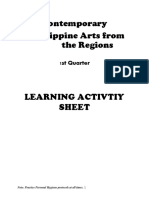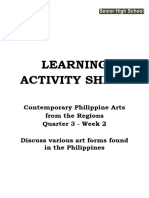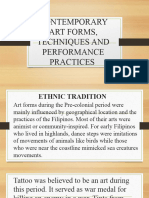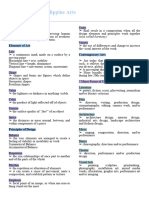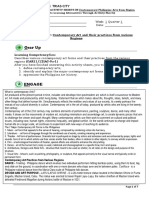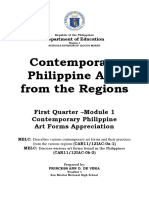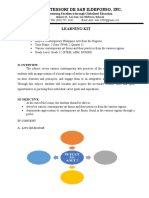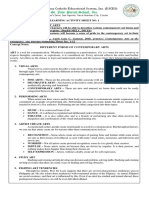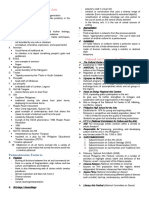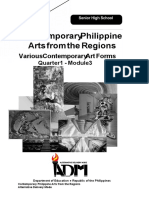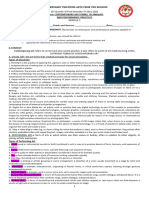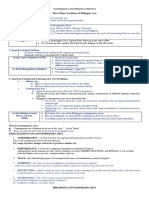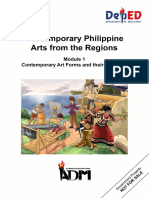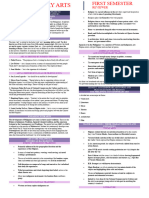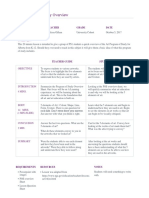0% found this document useful (0 votes)
25 views5 pagesModule CPAR
The document is a learning activity sheet for students at Macatcatuit High School focusing on contemporary Philippine arts from various historical periods. It covers the development of Philippine arts from pre-colonial times through Spanish and American colonial influences, detailing major art forms such as visual arts, dance, music, architecture, theater, literature, and film. The sheet includes comprehension activities, vocabulary exercises, and assessment tasks related to the content.
Uploaded by
Nabelyn Aquino LucianoCopyright
© © All Rights Reserved
We take content rights seriously. If you suspect this is your content, claim it here.
Available Formats
Download as DOCX, PDF, TXT or read online on Scribd
0% found this document useful (0 votes)
25 views5 pagesModule CPAR
The document is a learning activity sheet for students at Macatcatuit High School focusing on contemporary Philippine arts from various historical periods. It covers the development of Philippine arts from pre-colonial times through Spanish and American colonial influences, detailing major art forms such as visual arts, dance, music, architecture, theater, literature, and film. The sheet includes comprehension activities, vocabulary exercises, and assessment tasks related to the content.
Uploaded by
Nabelyn Aquino LucianoCopyright
© © All Rights Reserved
We take content rights seriously. If you suspect this is your content, claim it here.
Available Formats
Download as DOCX, PDF, TXT or read online on Scribd
/ 5

